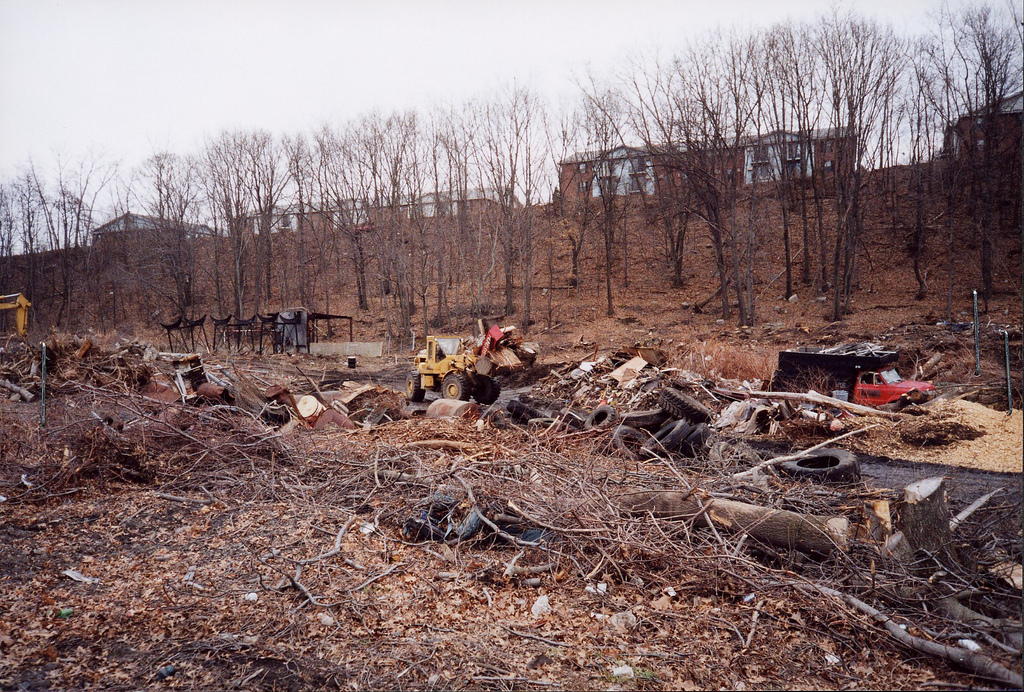If poor communities aren’t living in the shadow of active industrial pollution, they’re often living in its graveyard. Industrial polluted brownfields are fenced and festering from California to Maine, frequently situated near low-income residents. When developers come to clean up and build on the sites, too often they plan projects that will push out rather than benefit the people who live nearby.

Massachusetts Dept. of Environmental ProtectionA brownfield in Worcester, Mass.
But today The New York Times points to a different kind of trend in brownfields development: building health centers for low-income local residents on sites formerly occupied by meatpacking plants, gas stations, and factories. These kinds of projects stand to bolster communities, not just property values, and they’re still serious investment opportunities for health-care companies.
[There’s] a nationwide trend to replace contaminated tracts in distressed neighborhoods with health centers , in essence taking a potential source of health problems for a community and turning it into a place for health care. In recent years, health care facilities have been built on cleaned-up sites in Florida, Colorado, New Hampshire, Minnesota, Oregon and California.
“These health care providers are getting good at it,” said Elizabeth Schilling, policy manager for Smart Growth America, an advocacy group. “They have internalized the idea that this is an opportunity for them.”
Because these sites are contaminated, many qualify for government tax credits and grants, providing health centers with vital seed money to build. Community health centers, by design, exist to serve populations in poor neighborhoods, where there also tend to be available but contaminated properties like old gas stations, repair shops and industrial sites.
In fact, many of the country’s 450,000 contaminated sites, known as brownfields, are in poor neighborhoods, according to the Environmental Protection Agency. These tracts are disproportionately concentrated in poor communities because contaminated sites are more difficult to redevelop if property values are depressed. Banks are often reluctant to finance construction on a property that might require a costly cleanup.
Brownfields projects can qualify for redevelopment grants from the Department of Housing and Urban Development plus tied-in HUD loans and state grants. Florida in particular has promoted the construction of health centers on brownfields with tax credits of up to $500,000.
“The concept in Florida has proven to be not only needed, but viable,” said Michael R. Goldstein, an environmental lawyer in Florida who specializes in brownfield redevelopment. “We are just at the beginning of the journey here. I predict that in the next two years we’ll have close to two dozen across the state.”
How do you improve an impoverished, troubled community for the people who live there now and not the people who would move there if it were less impoverished, less troubled? (Coughgentrificationcough.) This is a question that governments ask almost as infrequently as developers. Grant-qualifying brownfields development projects can be anything from pricey restaurants and mixed-income condominiums to these health centers. If this health-center trend continues, especially in unlikely Florida, it might encourage other communities to redevelop around the needs of their actual residents.



